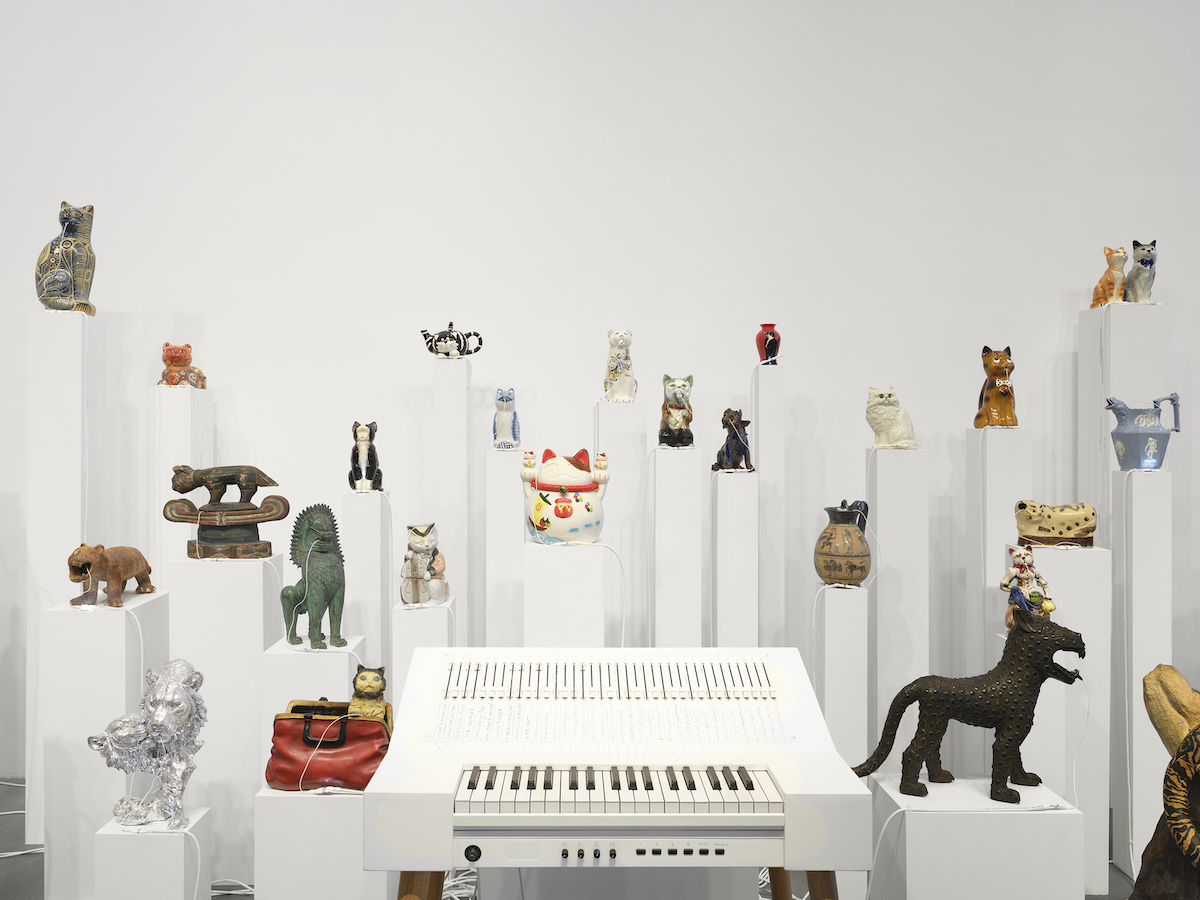

This essay originally appeared in Reframed, the Art in America newsletter about art that surprises us and works that get us worked up. Sign up here to receive it every Thursday.
Herding cats is notoriously difficult, but how about making them harmonize? That is a hypothetical taken up long ago in a curious 17th-century musical text—and again more recently by the British sound artist Oliver Beer. His latest gallery show in New York, “Resonance Paintings – Cat Orchestra” at Almine Rech, involves a probably apocryphal contraption (one hopes!) called the Cat Piano devised by Athanasius Kircher. In Musurgia Universalis, a book published in 1650, Kircher described the instrument as a collection of cats in cages that would shriek, in different voices, each time one of its tails was struck by a spike triggered by fingers playing a keyboard.
Beer brought Kircher’s vision to life—albeit in a much gentler version. The centerpiece of his show is an arrangement of 37 cat-shaped vessels and figurines, including a feline absinthe pitcher from early 20th-century France, a 19th-century ceramic cat “pillow” used as a headrest by opium smokers in China, and a recent replica of a fierce guardian lion from Thailand. All of the found objects are connected to microphones situated to pick up different frequencies that resonate inside of each hollow form. A custom keyboard sits in front of the orchestra, as it were, and conducts it in an automated fashion, with sliders moving up and down to show which cats’ voices are “singing” at any given moment. (Gallery-goers can sit at the keyboard and play it by hand too, but during all my visits everyone kept a curious distance.)
The mood of the music the orchestra plays is transporting, ambient in a manner similar to latter-day Brian Eno compositions for his 77 Million Paintings installation project started in 2006. And the variety of the vessels and figurines enlisted—ranging from campy tchotchkes to elegant historical finery—helps direct attention away from the technological makeup of the work to its more playful, experiential effects. This is not severe, austere sound art by any stretch.

The show also includes Reanimation (Everybody Wants to Be a Cat), a 2024 film made with school kids’ drawings of a scene in the movie The Aristocats (1970), and a pair of “Recomposition” wall works (both 2024) that feature broken bits of cat sculptures and other objects (feathers, guitar strings, parts of an old clock) preserved in resin. But most notable visually is a series of nine “Resonance Paintings” (2024) that Beer made by casting powdered pigment on canvases laid over amplifiers playing sounds from the cats in the orchestra. The results are all abstract modulations of blue on white, and knowing that they were made in part by sound gives them a sort of synesthetic presence. They’re silent, of course, but also audible in their way.